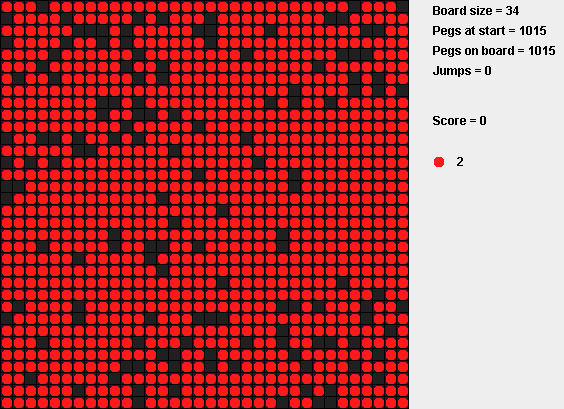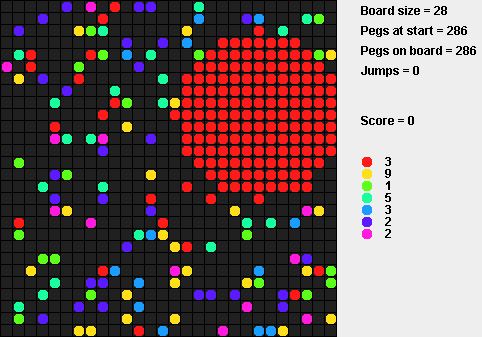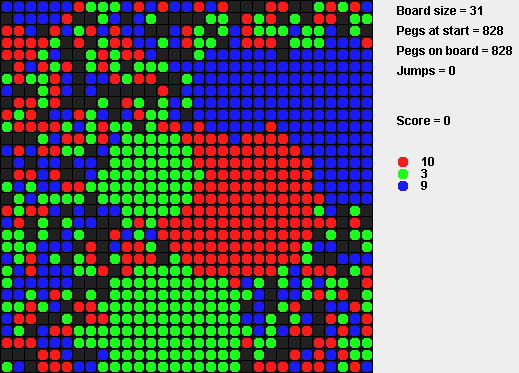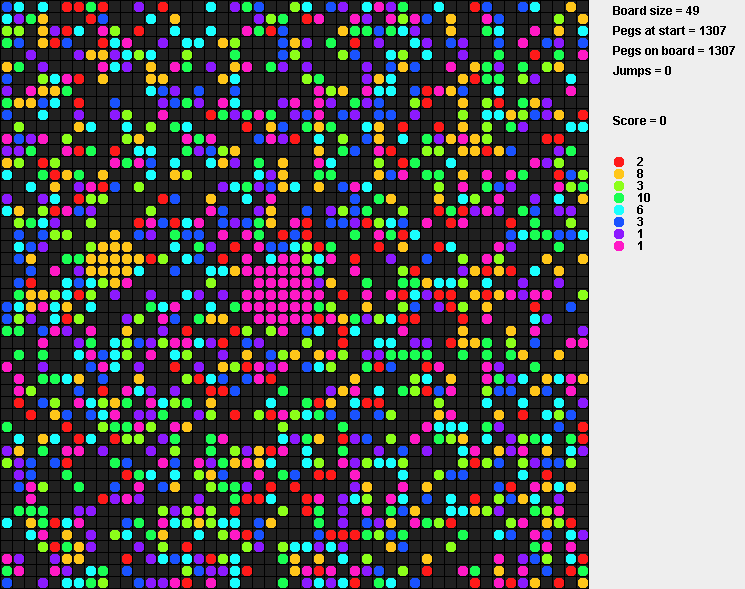Challenge Overview
Problem Statement | |||||||||||||
You are given a square board containing N by N cells. On the board you have M types of pegs, each type has its own value for scoring purposes. A peg can move on the board by jumping over an adjacent peg and landing on an empty space. A peg can perform a sequence of jumps, one after the other. A peg will be removed from the board when another peg jumps over it. The score you get for a sequence of jumps performed by a peg is the sum of the values of the pegs removed from the board during the sequence, multiplied by the length of that sequence. Your task is to maximize the sum of the scores gained when performing peg sequence jumps. Implementation DetailsYour code should implement the method getMoves(int[] pegValue, String[] board). Your getMoves method will be called once and should return a String[] containing your moves.
You must return the list of peg jumps that you want to perform. Each element of your return must describe one sequence of jumps for a single peg. Each String in your return must be a space delimited string with the following format "ROW COL SEQ". ROW is the zero based row and COL the zero based column of the peg that you want to move. The top left corner of the board corresponds to row and column zero. SEQ is a list of characters that denotes the direction of each jump in the sequence. The possible directions are:
ExampleGiven the following board (seed 1) and shown peg values. 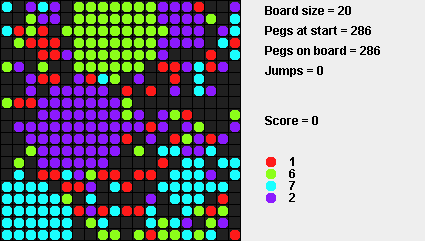
Let your String[] return be {"17 11 R","11 15 LLDD"}. The first sequence will take the peg at location (17,11) and jump right, removing one peg with a total value of 7. The score for your first sequence will then be 7*1=7. The sequence is shown here: 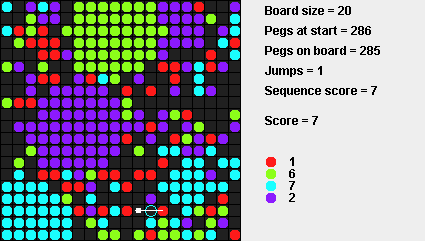
Your second sequence will take the peg at location (11,15) and jump left, left, down and then down, removing 4 pegs with a total value of (1+2+6+1=10). The score for your second sequence will then be 10*4=40. The sequence is shown here: 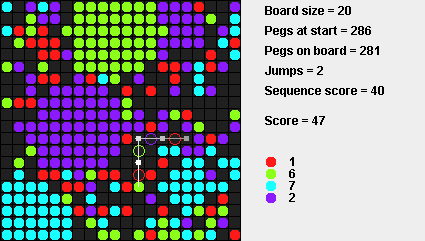
If you only returned those two sequences, your total raw score for the test will be 7+40=47. ScoringFor each test case we will calculate your raw and normalized scores. If you were not able to produce a valid return value, then your raw score is -1 and the normalized score is 0. Otherwise, the raw score is equal to the sum of scores over all sequence jumps. The normalized score for each test is 1,000,000.0 * YOUR / BEST, where BEST is the highest score currently obtained on this test case (considering only the last submission from each competitor). Finally, your total score is equal to the arithmetic average of normalized scores on all test cases. You can see your raw scores on each example test case by making an example submit. You can also see total scores of all competitors on provisional test set in the match standings. No other information about scores is available during the match. Clarifications
Test Case GenerationPlease look at the visualizer source code for the exact details about test case generation. Each test case is generated as follows:
ToolsAn offline tester/visualizer is available here. You can use it to test/debug your solution locally. You can also check its source code for exact implementation of test case generation, simulation and score calculation. | |||||||||||||
Definition | |||||||||||||
| |||||||||||||
Notes | |||||||||||||
| - | The time limit is 15 seconds per test case (this includes only the time spent in your code). The memory limit is 1024 megabytes. | ||||||||||||
| - | There is no explicit code size limit. The implicit source code size limit is around 1 MB (it is not advisable to submit codes of size close to that or larger). Once your code is compiled, the binary size should not exceed 1 MB. | ||||||||||||
| - | The compilation time limit is 30 seconds. You can find information about compilers that we use and compilation options here. | ||||||||||||
| - | There are 10 example test cases and 100 full submission (provisional) test cases. | ||||||||||||
Examples | |||||||||||||
| 0) | |||||||||||||
| |||||||||||||
| 1) | |||||||||||||
| |||||||||||||
| 2) | |||||||||||||
| |||||||||||||
| 3) | |||||||||||||
| |||||||||||||
| 4) | |||||||||||||
| |||||||||||||
| 5) | |||||||||||||
| |||||||||||||
| 6) | |||||||||||||
| |||||||||||||
| 7) | |||||||||||||
| |||||||||||||
| 8) | |||||||||||||
| |||||||||||||
| 9) | |||||||||||||
| |||||||||||||
This problem statement is the exclusive and proprietary property of TopCoder, Inc. Any unauthorized use or reproduction of this information without the prior written consent of TopCoder, Inc. is strictly prohibited. (c)2020, TopCoder, Inc. All rights reserved.
